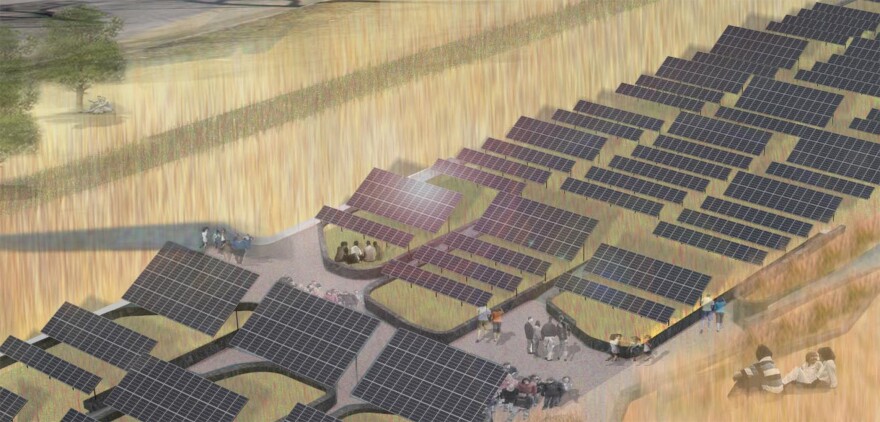Tomorrow I will attend a photovoltaics conference in Amherst. It’s like a Russian stack doll: the whole thing will be fun, but I’m really just trying to get down to that one little tiny doll in the middle.
And that tiny doll is a presentation on University at Buffalo’s planned solar array.
Using more than $7.5 million from the state, UB will install 5,000 photovoltaic panels on a large open green space on campus. That will produce enough power to cover electricity for 700 student apartments.
The design for the solar array was released this spring. It’s supposed to mimic the structure of DNA. According to a UB press release:
[Project architect Walter Hood] calls his concept ‘The Solar Strand,’ which refers to a linear landscape formation and to the way pairs of molecules entwine to form a DNA strand. … 'And, like a DNA fingerprint,' Hood says, 'solar panels would be codified and arranged to show how much power is captured/generated and where it is used.'
So what's it going to look like, you ask? There are a few pictures online of his design so far but not many. UB is calling it one of “the largest solar installation[s] on a college or university campus in America.”
UB’s Campus Architect, Robert Shibley, will deliver the update tomorrow at this conference. I’m not saying this flippantly: I’m really jazzed about seeing his Powerpoint presentation. I want to see more depictions of how 5,000 solar panels will look when they’re arranged like DNA. There's still the question of how much land this project will use. And there better be ample clip art, sound effects, and fancy page transitions.
The project was supposed to be ready this fall. Groundbreaking was scheduled to take place this month. But that’s now been pushed back to an undetermined date. Tomorrow I hope to find out why there have been ongoing delays.
University officials say the project will move them closer to achieving their pledge to become “carbon neutral” by 2030. That means offsetting as much pollution as the school produces. I’ve reported before on colleges making this promise. Nearly 800 schools have promised to reach this goal by 2050. Some experts I’ve interviewed for past stories say this goal is impossible with existing technology, not to mention budget constraints and growing energy demands.
Check back in 2030. This blog will be updated to indicate if UB is, in fact, carbon neutral. That is, if I remember to do that.



